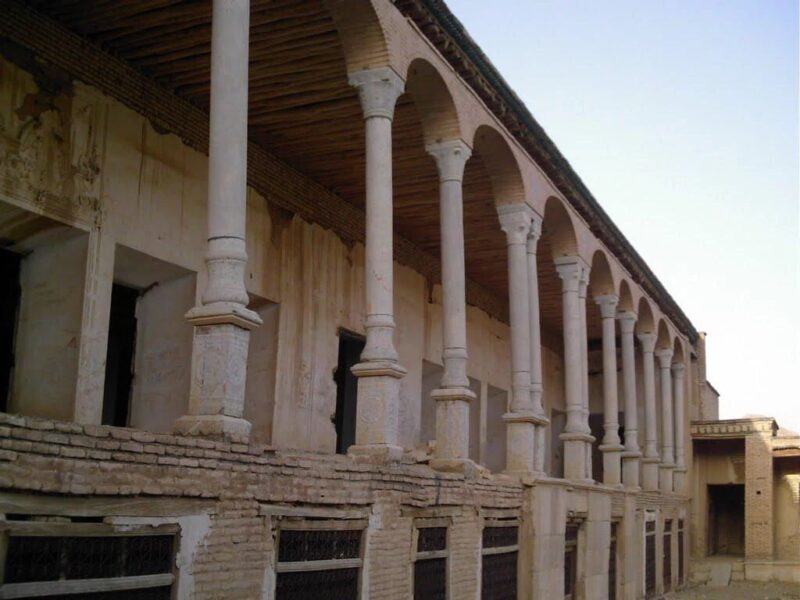Samsami Castle, also known as Samsam ol-Saltaneh Castle or Karaj Castle, stands on the southern side of Jomhuri Street in Karaj, Iran. Dating back to the Qajar period (1789-1925), the castle serves as a reminder of the era’s grandeur and power. Stepping through its gates feels like stepping back in time, allowing you to experience the magnificence and beauty of the Qajar era.
History of the Castle:
Founder: In 1307 (1828), Samsam ol-Saltaneh Bakhtiari, a prominent Qajar military leader, commissioned the construction of the castle. It is said that Samsam ol-Saltaneh built the castle as his residence and to display his power and wealth. The renowned architect of the period, Ustad Ali Mohammad Memar Kashani, designed and oversaw the construction. The skill and finesse of Ustad Memar are clearly evident in the castle’s architecture.
Function:Samsami Castle initially served as a residence for Samsam ol-Saltaneh and his family. Later, it was used as a military barracks and a prison. During the Pahlavi dynasty (1925-1979), following the fall of the Qajars, the castle became a military base.
Materials:Brick and stone, materials that ensure the castle’s strength and beauty. The use of brick and stone in the construction symbolizes the castle’s solidity and permanence. Brick and stone ornamentation further enhance the castle’s aesthetics.
Style:A blend of European and Iranian architecture, reflecting both elegance and innovation. This architectural style makes Samsami Castle a unique example of Qajar-era architecture. Elements of Iranian architecture such as arches, iwans (vaulted halls), and stuccowork, coexist with European architectural elements like columns and capitals, creating a distinctive beauty.
Area:12,000 square meters (approx. 129,000 sq ft), a vast space showcasing the castle’s grandeur. The extensive area reflects Samsam ol-Saltaneh’s power and influence during that period. This spacious area encompasses a central courtyard, towers, halls, and numerous rooms.
Towers: Four towers stand at the castle’s corners, symbolizing power and solidity. The towers, besides adding beauty, contribute to the castle’s defensive capabilities. The height (information on the height of the towers is missing).


